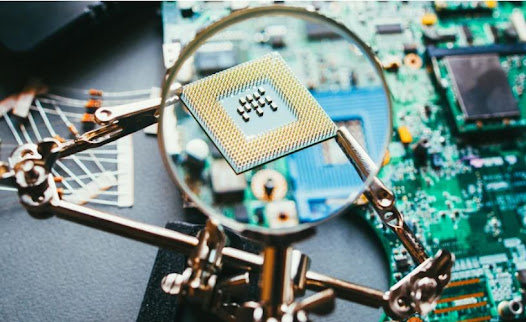Advantages and Applications of Rigid-Flex PCBs
Rigid-Flex PCBs are a symbiosis of rigid and flexible board technologies, offering a unique set of advantages that can be pivotal in modern electronics design. Their flexibility allows for more innovative and compact product designs, as they can bend, fold, and twist to fit into unconventional spaces. This versatility is particularly beneficial in industries like aerospace, medical devices, and wearable technology, where space constraints and product durability are paramount.
The integration of rigid and flexible boards in a single PCB eliminates the need for connectors and cables, which not only reduces the overall size and weight of the product but also enhances reliability. Fewer connectors and solder joints mean fewer potential points of failure, which is crucial in high-reliability applications. Moreover, the ability to design 3D configurations can significantly improve the aesthetic appeal and ergonomics of the final product.
From a cost perspective, while the initial investment in Rigid-Flex PCBs may be higher due to the complexity of their design and manufacturing process, they often result in long-term savings. The reduction in assembly time, decreased number of parts, and enhanced reliability can all contribute to a lower total cost of ownership.
Advantages and Applications of Traditional Rigid PCBs
Traditional PCBs, predominantly rigid in nature, have their own set of advantages that make them indispensable in the electronics industry. Their straightforward manufacturing process and the availability of standardized materials and components make them a cost-effective solution for a wide range of applications. Traditional PCBs are typically easier to design, prototype, and scale up, which is a significant advantage for large-scale production.
These PCBs are suited for a vast array of applications, from simple consumer electronics like toys and appliances to more complex systems like computer hardware and industrial machines. The robustness of rigid PCBs makes them ideal for products that require a stable and durable platform for their electronic components.
While they may not offer the same level of design flexibility as Rigid-Flex PCBs, traditional PCBs are often preferred for their proven reliability and ease of integration into various electronic assemblies. Their cost-effectiveness is particularly noticeable in standard applications where the unique advantages of Rigid-Flex PCBs are not a necessity.
Cost Comparison Analysis
When comparing the costs of Rigid-Flex and Traditional PCBs, it's essential to consider not just the initial manufacturing costs but also the total cost of ownership, which includes factors like assembly, maintenance, and product longevity.
Manufacturing Costs: Rigid-Flex PCBs generally have higher manufacturing costs due to their complex design and fabrication processes. However, this is offset by their ability to reduce the overall part count and eliminate the need for connectors and additional wiring.
Assembly Costs: The streamlined design of Rigid-Flex PCBs can significantly reduce assembly time and costs. Traditional PCBs, while cheaper to produce, may require more components and connections, potentially increasing assembly complexity and cost.
Maintenance and Reliability: The enhanced durability of Rigid-Flex PCBs translates to lower maintenance costs and less downtime. Traditional PCBs, although robust, can be more susceptible to connection issues over time, especially in applications involving movement or stress.
Long-Term Savings: While the upfront cost of Rigid-Flex PCBs is higher, their long-term benefits in terms of reliability and performance can result in overall cost savings. This is especially true for applications where failure costs are high, such as in medical or aerospace industries.
By carefully analyzing these cost factors, businesses can make more informed decisions about which PCB type best suits their needs, balancing initial costs against long-term benefits.
Case Studies or Real-World Examples
To illustrate the cost-effectiveness of each PCB type, consider these real-world scenarios:
Aerospace Application: A satellite manufacturer opted for Rigid-Flex PCBs to maximize space efficiency and reduce weight, crucial for aerospace applications. Despite the higher initial cost, the Rigid-Flex design contributed to a significant reduction in launch costs and increased the satellite's reliability, showcasing long-term savings and value.
Consumer Electronics: A manufacturer of household appliances chose Traditional PCBs for a new line of kitchen appliances, prioritizing cost-effectiveness for mass production. The robustness and lower upfront costs of Traditional PCBs aligned perfectly with the project's budget constraints and durability requirements, demonstrating the practical benefits in standard applications.
Conclusion
Choosing between Rigid-Flex and Traditional PCBs involves a nuanced analysis of cost, application, and performance requirements. While Rigid-Flex PCBs offer unparalleled flexibility and can lead to significant long-term benefits, especially in high-stakes industries, Traditional PCBs remain a staple for their reliability and cost-effectiveness in standard applications.
For businesses, the key is to assess not just the immediate cost implications but also the broader impact on product performance, lifecycle, and maintenance. In scenarios where innovation, space optimization, and reliability are paramount, Rigid-Flex PCBs may justify their initial cost premium. Conversely, for projects where straightforward design and mass production are central, Traditional PCBs provide a dependable and cost-efficient solution.
In conclusion, the decision between Rigid-Flex and Traditional PCBs should be guided by a comprehensive understanding of both immediate and long-term cost implications, ensuring that the chosen PCB type aligns with the product's goals and the company's financial strategies.
For more insights into the cost dynamics of different PCB types, consider exploring to the useful analysis of Flexible PCB Circuit Boards vs Rigid PCB Boards, providing a detailed comparison that complements the discussions here.








